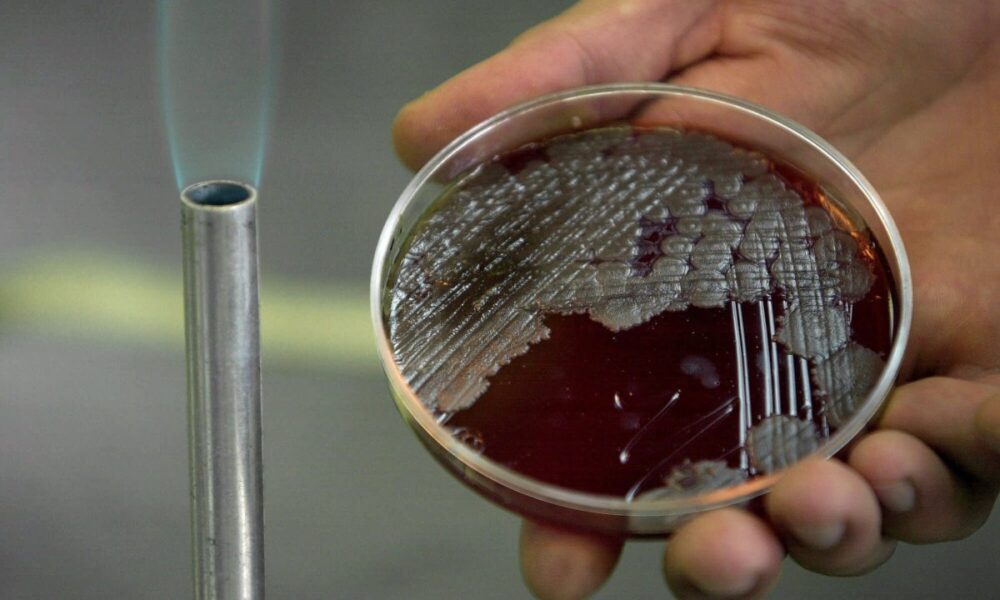Health
Anthrax: All You Need To Know About Deadly Disease In Town

As deadly pathogens go, few have a reputation as fearsome as anthrax. In 2001, a week after the September 11 attacks, powdered anthrax was put into letters and mailed to media outlets and senators in the US, infecting 22 people with anthrax and killing five. This act led to the US government and other countries across Europe mounting anthrax preparedness plans that involved the scanning of countless pieces of mail.
The standard treatment for anthrax is an antibiotic such as ciprofloxacin or doxycycline. Since some spores can take up to two months to be activated, people need to take antibiotics for that long to be sure they are protected.
The ancient bacterium is thought to have originated in Egypt and Mesopotamia. Academics believe that the Greek poet Homer wrote about anthrax as the “burning plague” in The Iliadaround 700 BC and some have even suggested that it was anthrax behind the plague that contributed to the fall of ancient Rome.
This week, Nigeria reported its first anthrax outbreak a few years after the COVID-19 pandemic that shook the world in 2020.
This was contained in a statement with subject ‘CONFIRMATION OF FIRST ANTHRAX CASE IN NIGERIA’, signed by the Permanent Secretary, Federal Ministry of Agriculture and Rural Development, Dr Ernest Umakhihe.
Umakhihe in confirming the first case said it was detected in Niger State, close to the Federal Capital Territory, FCT, on a farm and confirmed on Sunday July 16, 2023, by the National Veterinary Research Institute (NVRI)-Vom, Plateau.
Oborevwori Hails As Delta Guys Win Nigerian Idol Seasons Back To Back
Anthrax can be deadly, and on a large scale – in 1770, an epidemic that killed 15,000 people in what is now Haiti is thought to have been intestinal anthrax caused by uncooked beef.
Here’s what you need to know about the disease.
1. Anthrax can stay hidden for years
Anthrax is caused by a bacterium called Bacillus anthracis that occurs naturally in soil. One of the reasons it is such a threat is because the bacteria can stay dormant as highly resistant spores in the soil that can be brought to the surface by rain or tilling the fields. When these spores are eaten by animals they cause an outbreak.
2. It spreads via spores
Anthrax is not contagious, which means an infected person can’t pass it on to others like a cold or flu. However, people can get sick with anthrax if they come into contact with infected animals or contaminated animal products, and spores get into cuts or scrapes on the person’s skin. Thus it often infects veterinarians, agricultural workers, livestock producers or butchers. Eating raw or undercooked meat from an infected animal or drinking contaminated water can cause the disease. Anthrax can spread through the air, where the spores are inhaled, which can happen in places like slaughterhouses and tanneries.
In the current Sierra Leone outbreak, for example, this means that livestock farms are under quarantine until the outbreak is under control, animals will be vaccinated, and people living nearby will be made aware of the risks. Health authorities are intensifying their surveillance of any cases emerging in animals or humans.
NASENI Invites Producers Of Lithium Batteries To Manufacture In Nigeria
3. Breathing it in is mostly fatal
There are different types of anthrax symptoms depending on whether the spores enter the skin (cutaneous anthrax), are breathed in (inhalation anthrax), are eaten or drunk (gastrointestinal anthrax), or injected (injection anthrax).
When anthrax spores get inside the body, the bacterium goes from dormant to active and multiplies, spreading through the body, producing toxins.
Symptoms of cutaneous anthrax include blisters and sores on the skin, inhaling the spores can cause chest pains, shortness of breath and cough, and gastrointestinal anthrax can mean a swelling of the neck, sore throat, bloody vomiting or diarrhoea.
Inhaled anthrax usually develops a few weeks after exposure but it can take up to two months. Without treatment, most people die – even with aggressive treatment, it kills one in two people.
Without treatment, up to 20% of people with cutaneous anthrax die. If left untreated, more than half of patients with gastrointestinal anthrax die. However, treatment can save 60% of people.
4. It’s a deadly bioweapon
Anthrax spores are not only easily found in nature, they can be produced in a lab. The spores can be made into powders, sprays or dissolved into water or food, and can be impossible to detect through smell or taste.
Anthrax has been deployed as a weapon around the world for nearly a century, and was used in both World Wars.
5. It can be prevented by a vaccine and treated by antibiotics
The standard treatment for anthrax is an antibiotic such as ciprofloxacin or doxycycline. Since some spores can take up to two months to be activated, people need to take antibiotics for that long to be sure they are protected.
The anthrax vaccine adsorbed (AVA) can be given as a preventive for people who are particularly high risk, and can also be given post-exposure along with antibiotics.
Send Us A Press Statement Advertise With Us Contact Us
And For More Nigerian News Visit GWG.NG